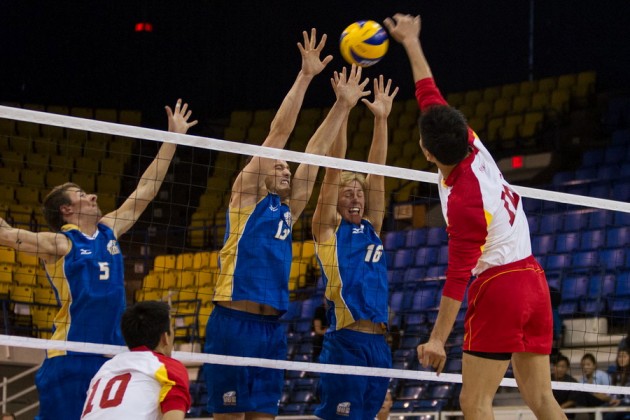
Volleyball
Dump to #1
Setters and hitters can learn something from our tip on tipping:
When dumping the ball into your opponents court, consider dumping deep into position #1 (right back). It will cause the opposing setter problems, since they’ll they have to turn to see their teammate’s pass.
A Mind Set
A way to train your mind to help you stay back is to begin thinking of yourself as the team’s center fielder. You’re the farthest one from the action, but you have the best view, and if things go wrong, you’re the last line of defense to avert a disaster.
Be ready, talk alot, become fearless, stay back and play center field.
The 3 R’s of Digging
Whenever you’re playing defense, it’s wise to remember these 3 “R’s:”
Ready, Read, and React.
Get down, be ready for anything. Read the set, the hitter’s body language, approach and armswing. Then react, based on what you’ve learned from the information you’ve gathered.
Ready, Read, and React.
Practice your “3 R’s” and become a great defensive player.
Work the Angles
Since you know that 90% of players (except at the higher levels of play) will hit angle, you can use that to your advantage. Get to the angle, and start there. If you have to make a move one way or another, the move won’t be as great if you’re already in the general vicinity.
The Jump Serve, Part 4
Part Four of the jump serve involves your approach. Once you’ve mastered the toss, which isn’t easy, and takes a great deal of practice, you’ll need to work on your approach.
If you’ve not a strong spiker, you probably don’t have a great approach, and you’ll need to work on that, because the approach is the same, only the location is different.
Work on your approach, normally two steps, a strong landing, big lift-off and powerful swing, before you begin your jump serving attempt.
When NOT to Dive
It’s not always a good idea to dive after balls. Here’s why:
Don’t dive after a ball that has already hit the floor. Some players do this for “show,” but all it “shows” is a) you were too slow to get to the ball, and b)you’re too slow to realize it.
Don’t Block the Setter
Don’t block the setter. It sounds obvious, but how many times do you see a 5′ 3″ setter at the net, getting ready to set, and the 6’2″ blocker on the other side goes up to block?
You gain nothing, and lose at least a step in getting outside to help block if you go up with the setter. Stay down and concentrate on the blasters, instead.
Play Defense First
Setters need to remember: you’re a defensive player first, a setter second. It’s so easy to keep cheating up toward the setting area and to forget to get into position to play defense. That leaves a hole, and forces your teammates to find ways to fill it. That leaves holes where THEY’RE supposed to be. So stay home, play defense and THEN set.
Freeze
Even if you’re out of position, freeze at the moment of your opposing hitter’s impact of the ball. You’ll make far more mistakes by being caught in transition than you ever will if you are set and ready to react.
So freeze first, react second. Don’t get caught moving.
Reading Hitters, Part 8
If the ball is set close to the net, it will usually be hit at a sharp angle and downward closer to the net than a standard set.
You’ll need to take a step or two forward, covering your blockers, because if they can’t stuff the close shot, it will come down close to the 10′ line.
There are two other reasons to move up. If your blockers can get hands on it and don’t stuff it back, the ball will be coming off at some odd angle, and you’ll need to help pop up up. Or the hitter will realize they’re going to likely be stuffed and tip just over the block, in which case you’ll need to be there to bump it back up softly.
Read more news from our Did You Know? section.
Check out our Fitness section, every Saturday a new story! Tomorrow read about High-Intensity Workouts That Get You Lean & Ripped FAST!